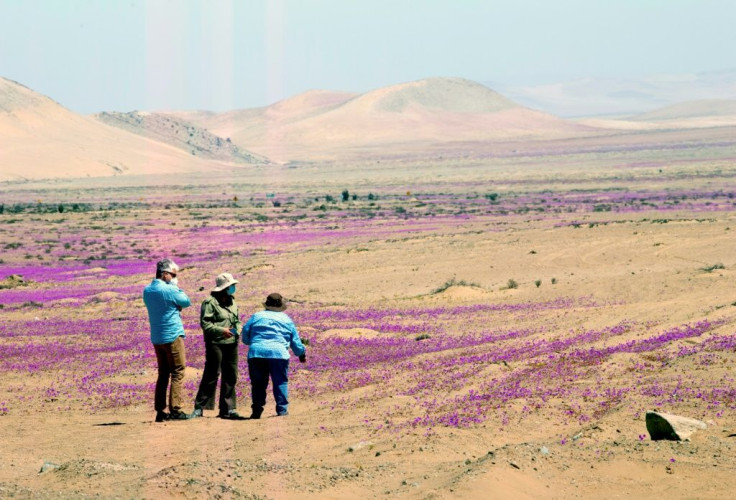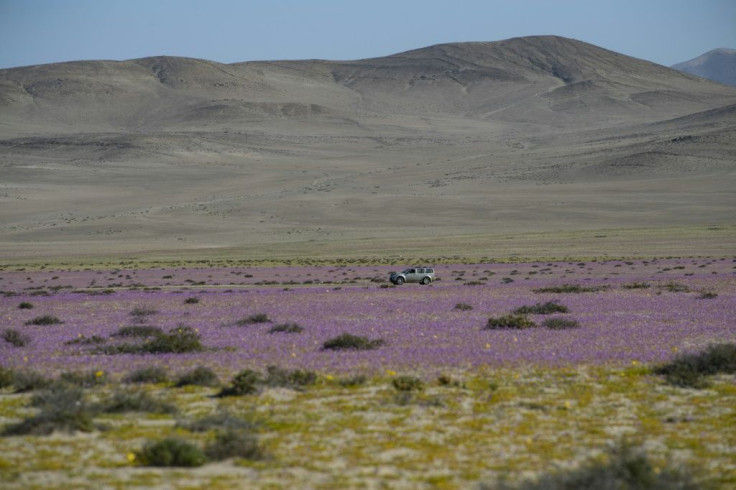Chile's 'Flowering Desert' A Window On Effects Of Climate Change
Chile's Atacama desert is the driest in the world but every few years, at springtime, a little corner of it is covered in a carpet of blooming purple and yellow flowers -- a phenomenon that experts are studying to learn how plants adapt to climate change.
The pata de guanaco and yellow ananuca are among 200 species of flowers that can bloom in an inhospitable environment that averages just 0.01 centimeters of rainfall a year.
Some parts of the desert can go years without seeing rain.

But this natural laboratory around Copiapo, a city 800 kilometers (500 miles) north of Santiago, is providing scientists with a chance to study how such species can adapt to extreme climates.
In this case, it is created by a complex ecosystem in which flower seeds can lie dormant in the soil for decades waiting for enough rainfall to allow them to come to life.
"When there is a certain amount of precipitation, which has been estimated at approximately 15 cubic millimeters, it triggers a large germination event," biologist Andrea Loaiza from La Serena University told AFP.

The surprising blossom is known locally as the "flowering desert."
The bloom is irregular, said Loaiza, and the last significant one happened in 2017. But it may not happen forever.
The ecosystem is "very fragile because it is already on the limit," said Loaiza, adding that "any disruption could break that balance."
And it is important to study these species to understand how they survive in such extreme conditions given that experts say global warming could turn many fertile regions of the planet into deserts like the Atacama.
"To adapt to a climate crisis, we need to understand the natural processes," said geneticist Andres Zurita.
"We want to learn from these plants because these species demonstrate different adaptation mechanisms," Zurita said.
© Copyright AFP 2024. All rights reserved.











